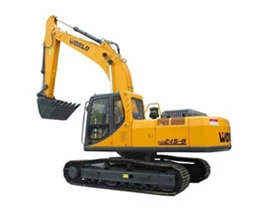Nov . 21, 2024 09:39 Back to list
render mesh fixings
Understanding Render Mesh Fixings A Comprehensive Guide
When it comes to enhancing the durability and aesthetic appeal of exterior walls, render systems play a crucial role. One of the key components that ensure the effectiveness of these systems is render mesh fixings. In this article, we will explore what render mesh fixings are, their purpose, and how to install them correctly for optimal performance.
What Are Render Mesh Fixings?
Render mesh is a type of mesh reinforcement, typically made from fiberglass or steel, used in rendering applications. It acts as a substrate for the render material, providing additional strength and flexibility. Render mesh fixings are the mechanical components that secure this mesh to the substrate—be it masonry, concrete, or another surface—before the rendering process begins. These fixings are essential for ensuring that the render adheres properly, reducing the risk of cracking and providing longevity to the rendered finish.
Purpose of Render Mesh Fixings
The primary purpose of render mesh fixings is to anchor the render mesh firmly in place. This is crucial for several reasons
1. Structural Integrity Render mesh adds structural strength to the finished wall. The fixings ensure that the mesh does not shift during the application of the render, which can lead to weaknesses and potential failure of the surface.
2. Crack Resistance One of the most common issues with rendered surfaces is cracking. By providing a stable base, render mesh fixings help distribute stresses evenly across the wall surface, minimizing the chances of cracks forming.
3. Weather Resistance A well-secured render mesh facilitates better weather resistance. By preventing moisture infiltration and allowing for even curing of the render material, the fixings indirectly contribute to the longevity of the rendered surface.
4. Aesthetic Appeal Properly secured mesh gives a smooth, even surface for the render application, which enhances the overall appearance of the building.
Types of Render Mesh Fixings
There are various types of render mesh fixings available, each designed for different applications and substrates. The most common types include
render mesh fixings

- Plastic Anchors Lightweight and easy to install, plastic anchors are typically used for non-load bearing walls or where minimal loading is expected. They are generally suitable for use with lightweight render materials.
- Metal Screws For areas where additional strength is required, metal screws can be used to secure the render mesh. These are essential in heavy-duty applications, where the render will face significant weather exposure and structural stress.
- Washers Often used in conjunction with screws, washers help distribute the pressure applied by the fixings, preventing damage to the mesh and ensuring a secure hold.
Installation Process
Correct installation of render mesh fixings is vital for achieving the desired results. Here’s a step-by-step guide
1. Preparation Ensure the substrate is clean, dry, and free from any debris. This will enhance the adhesion of the render and the mesh.
2. Measuring and Cutting Mesh Roll out the render mesh and cut it to the required length, ensuring it overlaps at the edges for continuity.
3. Securing the Mesh Begin securing the render mesh by fixing it at one end using the chosen type of fixings. Space out the fixings according to the fabric manufacturer’s recommendations—typically, anchor points should be no more than 300mm apart.
4. Apply Render Once the mesh is securely in place, you can apply the render material. Ensure that the render completely covers the mesh for optimal protection.
5. Final Checks After the render has been applied, inspect the surface for any inconsistencies or areas where the mesh may be visible. Touch up as needed.
Conclusion
Render mesh fixings are an indispensable component of any successful render system. They not only enhance the structural integrity of the walls but also contribute significantly to the overall appearance and durability of the surface. By understanding their importance and following the correct installation procedures, homeowners and builders can ensure that their rendered walls will stand the test of time, providing both beauty and performance for years to come.
-
Reinforcing Mesh: Core Material of the Construction Industry
NewsJul.07,2025
-
Welded Wire Fabric Reinvented for Modern Projects
NewsJul.04,2025
-
Superiority of Stainless Steel Woven Mesh
NewsJul.04,2025
-
Key Types of Razor Wire and Their Applications
NewsJul.04,2025
-
Durable Metal Fence Types for Security
NewsJul.04,2025
-
Best Materials for Livestock Fence
NewsJul.04,2025
products.







